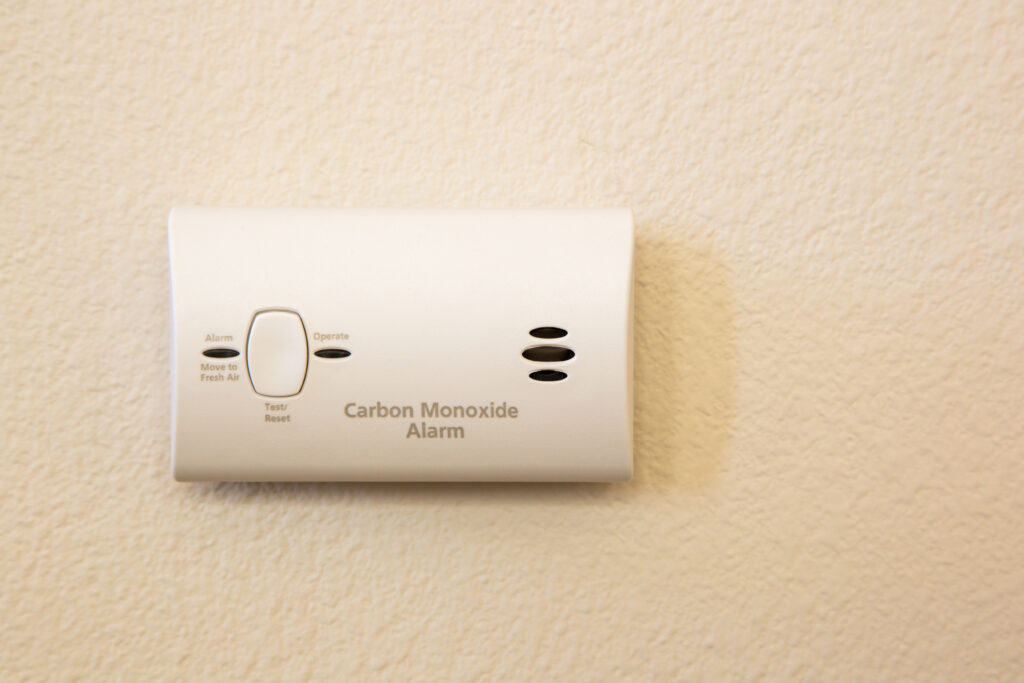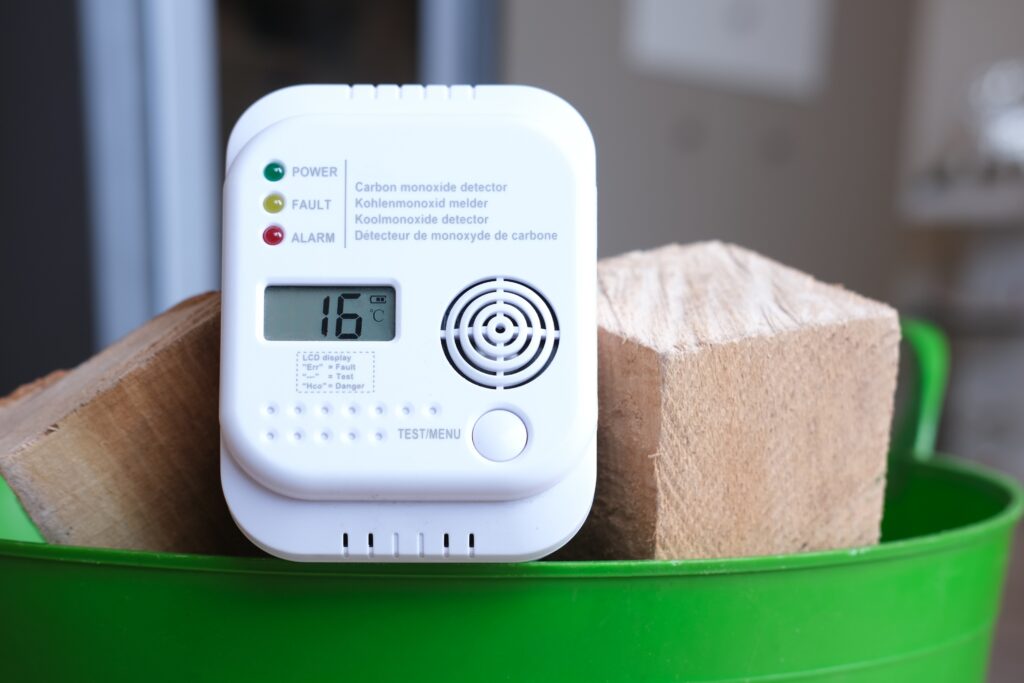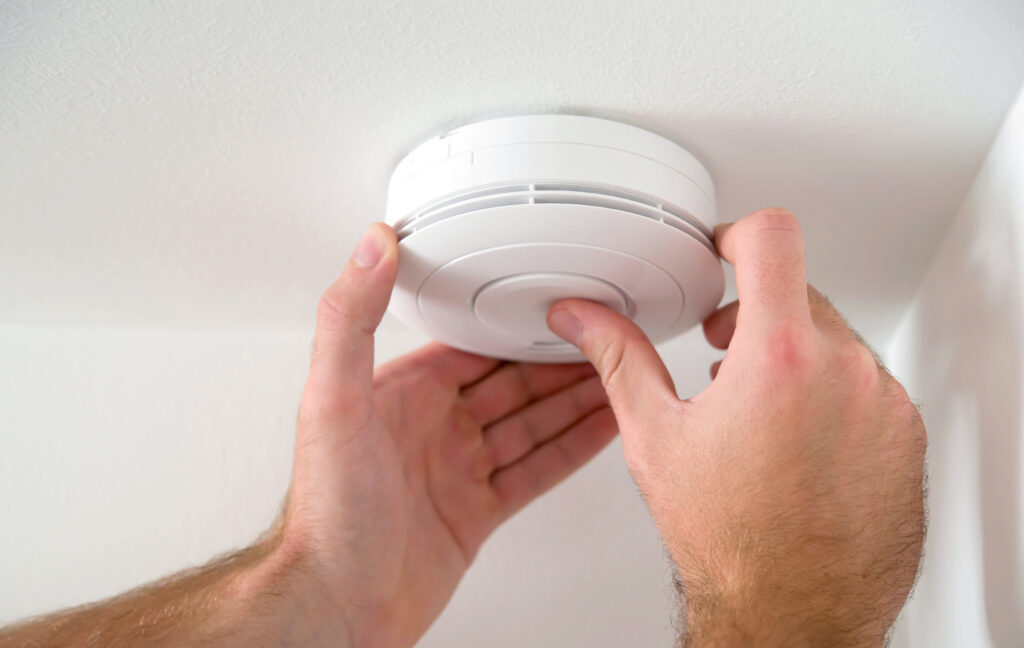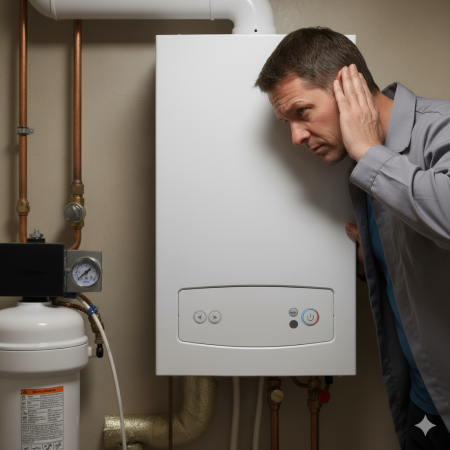Carbon monoxide detectors are as important as smoke detectors and fire alarms because a carbon monoxide leak can cause serious illness, and even death.
It’s no surprise then that carbon monoxide alarm installation saw a 28% increase in demand in 2023, according to our Home Improvement Trends Report. They’re a vital safety feature that ensures you have good quality air in your home at all times. Below, we’ve answered all your questions about installing carbon monoxide detectors in your home.
How can you tell if there is carbon monoxide in your house?
Carbon monoxide is known as the ‘silent killer’ because it’s an odourless and colourless gas, meaning it’s essentially invisible. Since you can’t see or smell it, the only way you can tell that there’s a carbon monoxide leak in your home is with a CO detector.
Without carbon monoxide alarms, you and the people you live with are at risk of carbon monoxide poisoning, which can be lethal. Find a carbon monoxide alarm installer to protect your home today.
What can trigger a carbon monoxide alarm?
Carbon monoxide is created when fuels (natural gas, gasoline, wood or coal) burn incompletely. Many things can cause carbon monoxide to build up in your house, including:
- Malfunctioning fuel burning appliances and cookers, including space heaters, stoves and fireplaces
- Combustion engines such as generators and vehicles (running in a garage that is attached to your home)
- Blocked chimneys
- Grills (when used in closed spaces)
All of these things can lead to CO building up, triggering a carbon monoxide alarm. If you think you’ve located what’s leaking, speak to a skilled tradesperson who can fix your malfunctioning appliance for you.
How many carbon monoxide detectors are required in a house?
How many carbon monoxide alarms you need depends on the size and layout of your home, but in general it’s recommended that you place at least one CO detector on every floor of your home, as well as one in or near each bedroom.
You should also put CO alarms in rooms that have fuel-burning appliances.
You should avoid placing carbon monoxide alarms in bathrooms, as well as near open windows, fireplaces and heating appliances. This is because these areas can cause false readings.

What are the symptoms of carbon monoxide poisoning?
As well as installing CO alarms to detect carbon monoxide, you should also be aware of the effects of carbon monoxide on your health, so you can recognise the early signs of a leak.
The symptoms of carbon monoxide poisoning are:
- Drowsiness / fatigue
- Shortness of breath
- Headaches
- Vomiting / nausea / dizziness
- Low blood pressure
- Chest pain
- Confusion / impaired judgement
- Rapid heartbeat
You might also experience loss of consciousness (which can ultimately lead to death) if you’re exposed to high levels of carbon monoxide poisoning. If you’re experiencing symptoms, get out of your home as soon as possible, directing anyone else in the building to do the same.
Often, pets become poisoned before people do. If your pets are unresponsive or weak, this could be a sign of a carbon monoxide leak. To avoid getting sick, we recommend you ensure all of your carbon monoxide alarms are working properly. Speak to a skilled CO detector installer in your local area today.

What does two beeps mean on a carbon monoxide detector?
Two beeps usually indicates that the batteries in your carbon monoxide detector need to be replaced as soon as possible. Follow the instruction manual to replace and test your battery powered CO alarm properly.
In general, your carbon monoxide detector will need new batteries once a year. Make sure you’re testing your carbon monoxide alarms at least once a month to ensure they’re in good working condition. Make sure to check the manual for your CO alarm, as different models may beep for different reasons.
What does three beeps mean on a carbon monoxide detector?
Three beeps usually means that your carbon monoxide alarm has detected a dangerous amount of carbon monoxide gas in your home. If your alarm goes off, you should turn off fuel-burning appliances, open all the windows in your home and evacuate everyone from the building.
Once you’ve done this, don’t go back inside. Call the fire department and wait for them to arrive outside. They will give you the all clear when it’s safe to re-enter.
Make sure to check the manual for your CO alarm, as different models may beep for different reasons.
How do I hide my carbon monoxide detector?
You shouldn’t hide or obstruct your carbon monoxide alarm, as this could prevent it from functioning properly, putting you and your loved ones in danger. Carbon monoxide alarms need to be visible and easily accessible, which means there isn’t a lot of leeway for altering their appearance or keeping them hidden.
You can purchase yours so they match your home’s décor so they blend in better with your walls or ceilings. The main thing is that they stay unobstructed at all times.

Like smoke alarms, fire alarms and burglar alarms, carbon monoxide alarms are an important safety feature in your home. Due to the fact that CO alarms are battery powered, you should check yours on a monthly basis to ensure they’re working properly. You can opt for a combined smoke and CO alarm or you can get yours installed separately.
To get new carbon monoxide detection alarms in your home, speak to a skilled carbon monoxide specialist today.
Read the full article here









